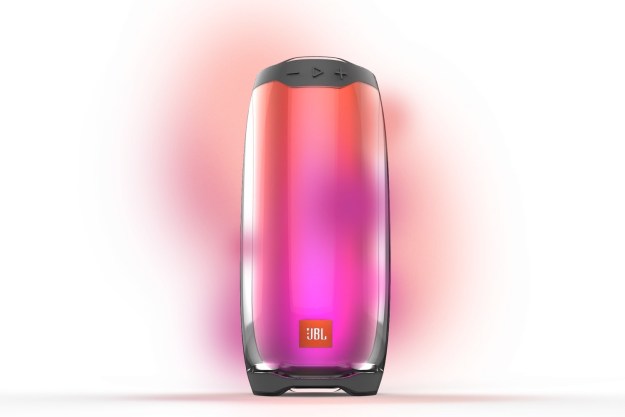Smart speakers like the Google Home and Amazon Echo are handy, but they can be a little on the plain side, and they’re also stuck in the home. If you want something a little more lively, and the ability to unplug and hit the road, Sony’s new SRS-XB501G with Google Assistant could be exactly what you’re looking for.
Portability is the name of the game when it comes to the XB501G. Sony says the speaker is “made to go where other speakers with the Google Assistant built-in can’t” thanks to both Wi-Fi and Bluetooth connectivity, along with a powerful onboard battery. A built-in handle makes it easy to get up and go, while IP65 certification means the speaker is resistant to both water and dust. You don’t want to drop it in the pool, but it’s a whole lot more rugged than your average smart speaker.
The XB in the model name stands for Extra Bass, putting it in the same league as the other speakers in the XB range that Sony released earlier this year, just a whole lot smarter. The speaker is also designed to sound a bit more lifelike thanks to the included Live Sound mode, which uses Digital Signal Processing along with the angled speakers to make your music sound like you’re at a concert. The speaker adds further to the festival-style atmosphere with built-in lighting effects, including strobe and line lighting, and it’s also available in a number of fun colors.
Sony claims the battery offers up to 16 hours of playback time on a full charge, so when you’re on the go, you’ll have plenty of juice in the tank. The XB501G also features a USB-C port, allowing you to charge your phone, tablet, or other mobile devices, though obviously this will lower your playback time.
The SRS-XB501G will retail for $300 and will be available for purchase from authorized Sony dealers beginning in October. For more information, including full specifications, see the Sony website. In the meantime, take a look at our lists of the best Bluetooth speakers and the best smart speakers for an idea of what Sony’s offering is competing against.
Editors' Recommendations
- Rock and roll till dawn with Sony’s 25-hour SRS-XV500 party speaker
- Sony’s latest party speaker brings a light show to your next karaoke session
- Sony’s latest wireless speaker doubles as a pricey artificial candle
- Sony wants you to play your summer soundtrack on its new wireless speakers
- Acer’s Halo Smart Speaker with Google Assistant dazzles with its light-up base


